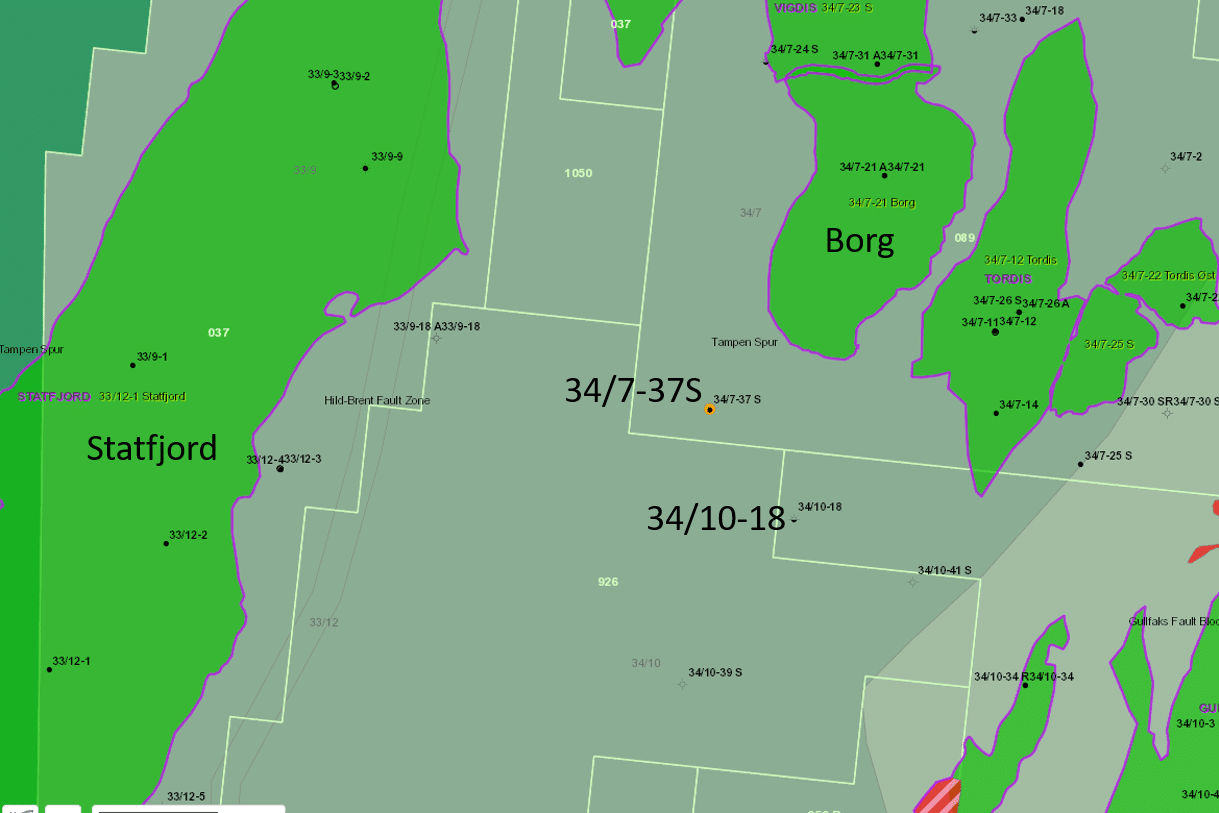On the last day of October, well 34/7-37S was spudded in production licence 089. Equinor is the operator at 41.5%, licence partners are Petoro (30%), Vår Energy (16.1%), Idemitsu Petroleum (9.6%) and Wintershall Dea (2.8%).
Intra-Draupne sandstones
The main aim of the well is most likely to test intra-Draupne sandstones of the Fjell prospect and it is another good example of how operators are chasing smaller near-infrastructure volumes in more niche plays.
The Upper Jurassic Draupne Formation was deposited in the area in times of significant fault block rotation and tilting. The source area of the shallow marine sandstones is therefore likely to be the uplifted fault block located just to the east of the well (Tordis field).
Stratigraphic pinch-out
In a master thesis written by Hao Qin, a former student from the University of Stavanger, the interpretation of Upper Jurassic sandstones in the area between the Statfjord and Tordis fields is being described in detail. He interpreted a seismic line that runs very close to where the Fjell well is currently being drilled, as shown below.

The seismic section clearly suggests that in order for the trap to work, a stratigraphic pinch-out is required towards the southeast. Evidence of a pinch-out is already presented by well 34/10-18, drilled in 1983, which failed to find sandstones in a very thin 4 m Draupne Formation. No live oil was seen in the well, but a 3.5 m unproductive oil-zone was encountered in a, sandy/marly and cemented limestone at the base of a very thin Cromer Knoll sequence (Mime Formation).
Hao Qin further suggested, based on seismic attributes, that the Draupne sands are present in the area where the well is currently being drilled, but the key uncertainties will probably be its thickness and reservoir quality.
Charge is probably less of a concern for Fjell. Migris, the company that describes and reduces geological and economical exploration risk by simulating geological processes, predicts the Fjell well to be a class A well with flowrisk value of 94% for the Upper Jurassic.
Borg
Prospectivity has been proven in Upper Jurassic reservoirs in the area already. The Borg accumulation (part of Tordis), discovered by 34/7-21, currently produces from Upper Jurassic intra-Draupne reservoirs.
HENK KOMBRINK





